1)Kannan, R., and U. V. Babu. “Identity and pharmacognosy of Ruta graveolens Linn.”
Ancient Science of Life 32.1 (2012).
2)Ren, Ming-Xun, and Jing-Yu Tang. “Up and down: stamen movements in Ruta graveolens (Rutaceae) enhance both outcrossing and delayed selfing.” Annals of Botany 110.5 (2012).
3)Watt, John Mitchell, and Maria Gerdina Breyer-Brandwijk. “The Medicinal and Poisonous Plants of Southern and Eastern Africa being an Account of their Medicinal and other Uses, Chemical Composition, Pharmacological Effects and Toxicology in Man and Animal.” The Medicinal and Poisonous Plants of Southern and Eastern Africa being an Account of their Medicinal and other Uses, Chemical Composition, Pharmacological Effects and Toxicology in Man and Animal. Edn 2 (1962).
4)Ghirardini, Maria Pia, et al. “The importance of a taste. A comparative study on wild food plant consumption in twenty-one local communities in Italy.” Journal of Ethnobiology and Ethnomedicine 3.1 (2007).
5)Stafford, G. I., et al. “Monoamine oxidase inhibition by southern African traditional medicinal plants.” South African Journal of Botany 73.3 (2007).
6)Kozioł, Ewelina, et al. “Rutamarin: Efficient Liquid–Liquid Chromatographic Isolation from Ruta graveolens L. and Evaluation of Its In Vitro and In Silico MAO-B Inhibitory Activity.” Molecules 25.11 (2020).
7)Harrington, Natalie. “Harmala Alkaloids as Bee Signaling Chemicals.” Journal of Student Research 1.1 (2012).
8)Govindasamy, Hunday, et al. “Binding mechanism of naringenin with monoamine oxidase–B enzyme: QM/MM and molecular dynamics perspective.” Heliyon 7.4 (2021).
9)Lee, Mei-Hsien, et al. “Monoamine oxidase B and free radical scavenging activities of natural flavonoids in Melastoma candidum D. Don.” Journal of Agricultural and Food Chemistry 49.11 (2001).
10)Kerppers, Flávio Klinpovous, et al. “Pain neuromodulation exerted by Ruta graveolens aqueous extract in experimental models of nociception.” Brazilian Journal of Development 7.4 (2021).
11)Park, Soo-Hyun, et al. “Antinociception effect and mechanism of Ruta graveolens L. in mice.” Journal of the Korean society for applied biological chemistry 53.5 (2010).
12)Rollinger, Judith M., et al. “In silico target fishing for rationalized ligand discovery exemplified on constituents of Ruta graveolens.” Planta medica 75.03 (2009).
13)Wszelaki, Natalia, Agnieszka Kuciun, and Anna Kiss. “Screening of traditional European herbal medicines for acetylcholinesterase and butyrylcholinesterase inhibitory activity.” Acta Pharmaceutica 60.1 (2010).
14)Cimaglia, Gloria & Gentile, Maria Teresa & Pastorino, Olga & Colucci D’Amato, Luca. (2019). Ruta graveolens stimulates neural plasticity of human and mouse embryonic mesencephalic neuronal cell progenitors.
15)Li, Ping, Kimihiro Matsunaga, and Yasushi Ohizumi. “Enhancement of the nerve growth factor-mediated neurite outgrowth from PC12D cells by Chinese and Paraguayan medicinal plants.” Biological and Pharmaceutical Bulletin 22.7 (1999).
16)Colucci-D’Amato, Luca, and Gloria Cimaglia. “Ruta graveolens as a potential source of neuroactive compounds to promote and restore neural functions.” Journal of Traditional and Complementary Medicine 10.3 (2020).
17)Zanella, Camila Ângela, et al. “Administração aguda do óleo essencial de Ruta graveolens L. sobre a memória e sobre a amnésia causada pela escopolamina em camundongos machos.” Revista Perspectiva 44.165 (2020).
18)Khan, Moshahid, et al. “Rutin protects dopaminergic neurons from oxidative stress in an animal model of Parkinson’s disease.” Neurotoxicity research 22.1 (2012).
19)Pan, Rui-Yuan, et al. “Sodium rutin ameliorates Alzheimer’s disease–like pathology by enhancing microglial amyloid-β clearance.” Science advances 5.2 (2019).
20)Suganya, Sarumani Natarajan, and Thangarajan Sumathi. “Effect of rutin against a mitochondrial toxin, 3-nitropropionicacid induced biochemical, behavioral and histological alterations-a pilot study on Huntington’s disease model in rats.” Metabolic brain disease 32.2 (2017).
21)Khouri, Nabil Azar, and Zeyad El-Akawi. “Antiandrogenic activity of Ruta graveolens L in male Albino rats with emphasis on sexual and aggressive behavior.” Neuroendocrinology letters 26.6 (2005).
22)Halvaei, Iman, Hamid Reza Sadeghipour Roodsari, and Zhila Naghibi Harat. “Acute effects of Ruta graveolens L. on sperm parameters and DNA integrity in rats.” Journal of reproduction & infertility 13.1 (2012).
23)NAJAFI, GOLAMREZA, et al. “EFFECT OF RUTA GRAVEOLENS AQUEOUS EXTRACT ON FOLLICULOGENESIS IN MICE.” (2013).
24)Kong, Yun Cheung, et al. “Antifertility principle of Ruta graveolens.” Planta medica 55.02 (1989).
25)De Freitas, Tanise Gonçalves, Patrice Martins Augusto, and Tatiana Montanari. “Effect of Ruta graveolens L. on pregnant mice.” Contraception 71.1 (2005).
26)Al-Okbi, Sahar Y., and Eman M. El-Sayed. “Effect of Ruta graveolens L. and Euphorbia peplus L. anti-inflammatory extracts on nutritional status of rats and the safety of their use.” (2002).
27)Stephen, Albee. “ANABOLIC EFFECT ON BONE FORMATION OF NANO ENCAPSULATED VOLATILE OIL OF RUTA GRAVEOLENS LEAVES IN LARVAL ZEBRAFISH MODEL.”
28)Al-Okbi, Sahar Y., and Eman M. El-Sayed. “Effect of Ruta graveolens L. and Euphorbia peplus L. anti-inflammatory extracts on nutritional status of rats and the safety of their use.” (2002).
29)Mancuso, Giuseppe, et al. “Phytochemicals from Ruta graveolens activate TAS2R bitter taste receptors and TRP channels involved in gustation and nociception.” Molecules 20.10 (2015).
30)Rafaet, H., and Z. Khayat. “Hepato and nephroprotective activities of Ruta graveolens and Sophora japonica and their flavonoids in normal and carcinogenic rat model.” Planta Medica 74.09 (2008).
31)Khulud Mohammad Alshehri “Hepatoprotective Effect of Ruta graveolens and Artemisia judaica Extracts against Intoxication Liver in Rats” Advances in Biological Research 14 (2), 2020.
32)Ashour, Mohamed B., et al. “Assessment of the preventive effects of Salvia officinalis and Ruta graveolens ethanolic leaf extracts on chlorpyrifos-and methomyl-induced renal toxicity and oxidative stress in albino rats.” International Journal of Prevention and Treatment 6.2 (2017).
33)Mahmoud, Ayman M., et al. “Ruta graveolens and its active constituent rutin protect against diethylnitrosamine-induced nephrotoxicity through modulation of oxidative stress.” Journal of Applied Pharmaceutical Science 5.10 (2015).
34)Hussein, Omnia E., Mousa O. Germoush, and Ayman M. Mahmoud. “Ruta graveolens protects against isoniazid/rifampicin-induced nephrotoxicity through modulation of oxidative stress and inflammation.” Global journal of biotechnology and biomaterial science 2.1 (2016).
35)Ratheesh, M., G. L. Shyni, and A. Helen. “Methanolic extract of Ruta graveolens L. inhibits inflammation and oxidative stress in adjuvant induced model of arthritis in rats.” Inflammopharmacology 17.2 (2009).
36)Ratheesh, M., G. Sindhu, and Antony Helen. “Anti-inflammatory effect of quinoline alkaloid skimmianine isolated from Ruta graveolens L.” Inflammation research 62.4 (2013).
37)Sahu, Debasis, et al. “A novel coumarin derivative, 8-methoxy chromen-2-one alleviates collagen induced arthritis by down regulating nitric oxide, NFκB and proinflammatory cytokines.” International Immunopharmacology 29.2 (2015).
38)Gibka, Julia, et al. “Experimental immunology Stimulation of humoral immunity in mice by undecan-2-one, undecan-2-ol and their derivatives.” Central European Journal of Immunology 33.2 (2008).
39)Pirouzpanah, Saeed, et al. “Inhibitory effect of Ruta graveolens L. extract on Guinea pig liver and bovine milk xanthine oxidase.” Iranian Journal of Pharmaceutical Sciences 5.3 (2009).
40)Somchit, Nhareet, et al. “Anti-ulcer and wound healing activity of Ruta graveolens.” Advances in Traditional Medicine 3.3 (2003).
41)Velmurugan, C., et al. “Evaluation Of Anti-Diabetic And Wound Healing Potential Of Ethiopia Plant ‘Ruta Graveolens’ In Diabetic Induced Rat.” NVEO-NATURAL VOLATILES & ESSENTIAL OILS Journal| NVEO (2021).
42)Gurudeeban, S., et al. “Effect of antioxidant and anti-aggregating properties of micro-propagated plantlets of Ruta graveolens.” African Journal of Biotechnology 11.6 (2012).
43)Wu, Tian‐Shung, et al. “Cytotoxic and antiplatelet aggregation principles of Ruta graveolens.” Journal of the Chinese chemical society 50.1 (2003).
44)Gentile, Maria Teresa, et al. “Ruta graveolens L. induces death of glioblastoma cells and neural progenitors, but not of neurons, via ERK 1/2 and AKT activation.” PLoS One 10.3 (2015).
45)Gentile, Maria Teresa, et al. “Ruta graveolens water extract inhibits cell-cell network formation in human umbilical endothelial cells via MEK-ERK1/2 pathway.” Experimental cell research 364.1 (2018).
46)jalali Moghadam, M. Ahmadi, et al. “Study on antibacterial effect of Ruta graveolens extracts on pathogenic bacteria.” Annals of Biological Research 3.9 (2012).
47)Salman, Hamzah Abdulrahman, et al. “Determination of antibacterial activity and metabolite profile of Ruta graveolens against Streptococcus mutans and Streptococcus sobrinus.” Journal of laboratory physicians 10.03 (2018).
48)Al Qaisi, Yaseen T., et al. “Ruta graveolens, Peganum harmala, and Citrullus colocynthis methanolic extracts have in vitro protoscolocidal effects and act against bacteria isolated from echinococcal hydatid cyst fluid.” Archives of Microbiology 204.4 (2022).
49)Hashemi Karouei, S. M., M. Sadeghpour Haji, and I. Gholampour Azizi. “Isolation of Saprolegnia and the influence of root ethanolic extract of Ruta graveolens on Saprolegnia. Spp growth.” International Journal of Bioscience, Biochemistry and Bioinformatics 2.1 (2012).
50)Reddy, Desam Nagarjuna, and Abdul Jabbar Al-Rajab. “Chemical composition, antibacterial and antifungal activities of Ruta graveolens L. volatile oils.” Cogent Chemistry 2.1 (2016).
51)Meepagala, Kumudini M., et al. “Algicidal and antifungal compounds from the roots of Ruta graveolens and synthesis of their analogs.” Phytochemistry 66.22 (2005).
52)Oliva, Anna, et al. “Natural fungicides from Ruta graveolens L. leaves, including a new quinolone alkaloid.” Journal of agricultural and food chemistry 51.4 (2003).
53)Perera, A. G. W. U., M. M. S. C. Karunaratne, and S. Chinthaka. “Biological activity and secondary metabolite profile of Ruta graveolens leaves against maize weevil infestations.” J. Entomol. Zool. Stud 5 (2017).
54)Barbosa, Flávia Silva, et al. “Insecticide effects of Ruta graveolens, Copaifera langsdorffii and Chenopodium ambrosioides against pests and natural enemies in commercial tomato plantation.” Acta Scientiarum. Agronomy 33 (2011).
55)Aivazi, Ali-Ashraf, and V. A. Vijayan. “Efficacy of Ruta graveolens extract and its synergistic effect with cypermethrin against Anopheles stephensi Liston larvae.” Toxicological & Environ Chemistry 92.5 (2010).
56)Bouabida, Hayette, and Djemaa Dris. “Effect of rue (Ruta graveolens) essential oil on mortality, development, biochemical and biomarkers of Culiseta longiareolata.” South African Journal of Botany 133 (2020).
57)Jeon, Ju-Hyun, Sang-Guei Lee, and Hoi-Seon Lee. “Isolation of insecticidal constituent from Ruta graveolens and structure-activity relationship studies against stored-food pests (Coleoptera).” Journal of food protection 78.8 (2015).
58)Makkizadeh Tafti, M., M. I. S. H. A. Salimi, and R. Farhoudi. “Allelopathic effect of rue (Ruta graveolens L.) on seed germination of three weeds.” Iranian Journal of Medicinal and Aromatic Plants Research 24.4 (2009).
59)Sampaio, Olívia Moreira, et al. “Evaluation of alkaloids isolated from Ruta graveolens as photosynthesis inhibitors.” Molecules 23.10 (2018).
60)Carvalho, Alessandra Vargas de, et al. “Evaluation of the tickcide, genotoxic, and mutagenic effects of the Ruta graveolens L.(Rutaceae).” Acta Sci. Biol. Sci. (2015).
61)Paulini, H., U. Eilert, and O. Schimmer. “Mutagenic compounds in an extract from Rutae Herba (Ruta graveolens L.). I. Mutagenicity is partially caused by furoquinoline alkaloids.” Mutagenesis 2.4 (1987).
62)Paulini, Hubert, et al. “Isogravacridonchlorine: a potent and direct acting frameshift mutagen from the roots of Ruta graveolens.” Planta medica 57.01 (1991).
63)Adam, I. Y., et al. “Toxicity of Ruta graveolens Seeds’ Extracts on Male Wistar Rats.” International Journal of Animal and Veterinary Advances 6.3 (2014).
64)Freire, R. B., H. R. Borba, e C. D. Coelho. “Ruta graveolens L. toxicity in Vampirolepis nana infected mice.” Indian Journal of Pharmacology 42.6 (2010).
65)Al-Okbi, Sahar Y., and Eman M. El-Sayed. “Effect of Ruta graveolens L. and Euphorbia peplus L. anti-inflammatory extracts on nutritional status of rats and the safety of their use.” (2002).
66)Khulud Mohammad Alshehri “Hepatoprotective effect of Ruta graveolens and Artemisia judaica extracts against intoxication liver in rats” Advances in Biological Research 14 (2), 2020
67)Seak, Chen-June, and Chih-Chuan Lin. “Ruta graveolens intoxication.” Clinical toxicology 45.2 (2007).
68)Dongyue, J. I. A. N. G., L. I. Yonghong, and S. H. E. N. Xin. “Components and variations of volatile organic compounds released from leaves and flowers of Ruta graveolens.” 浙江农林大学学报 35.3 (2018).
69)Reyes-Vaquero, Lorena, et al. “Seasonal variation of chemical profile of Ruta graveolens extracts and biological activity against Fusarium oxysporum, Fusarium proliferatum and Stemphylium vesicarium.” Biochemical Systematics and Ecology 95 (2021).

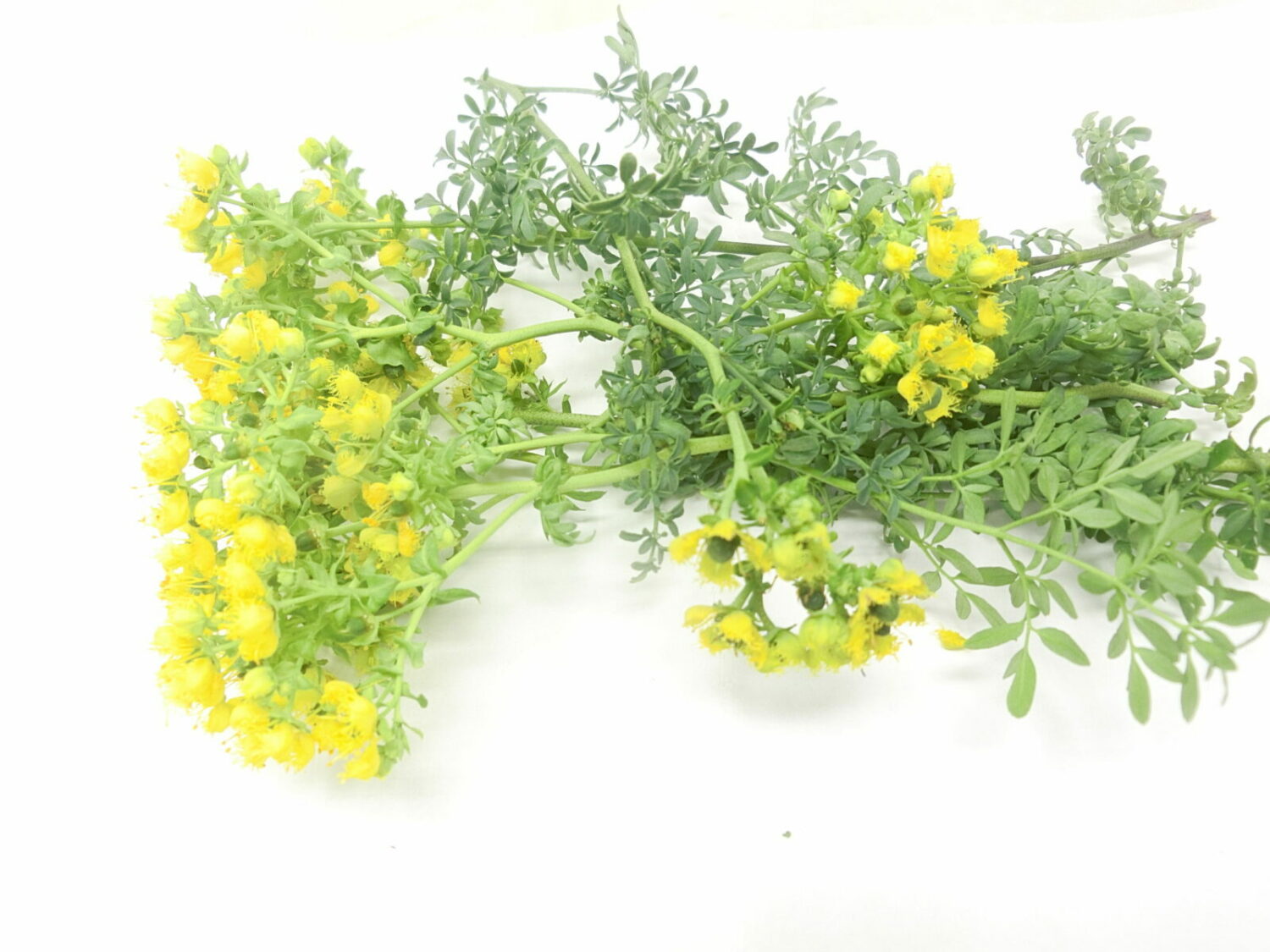
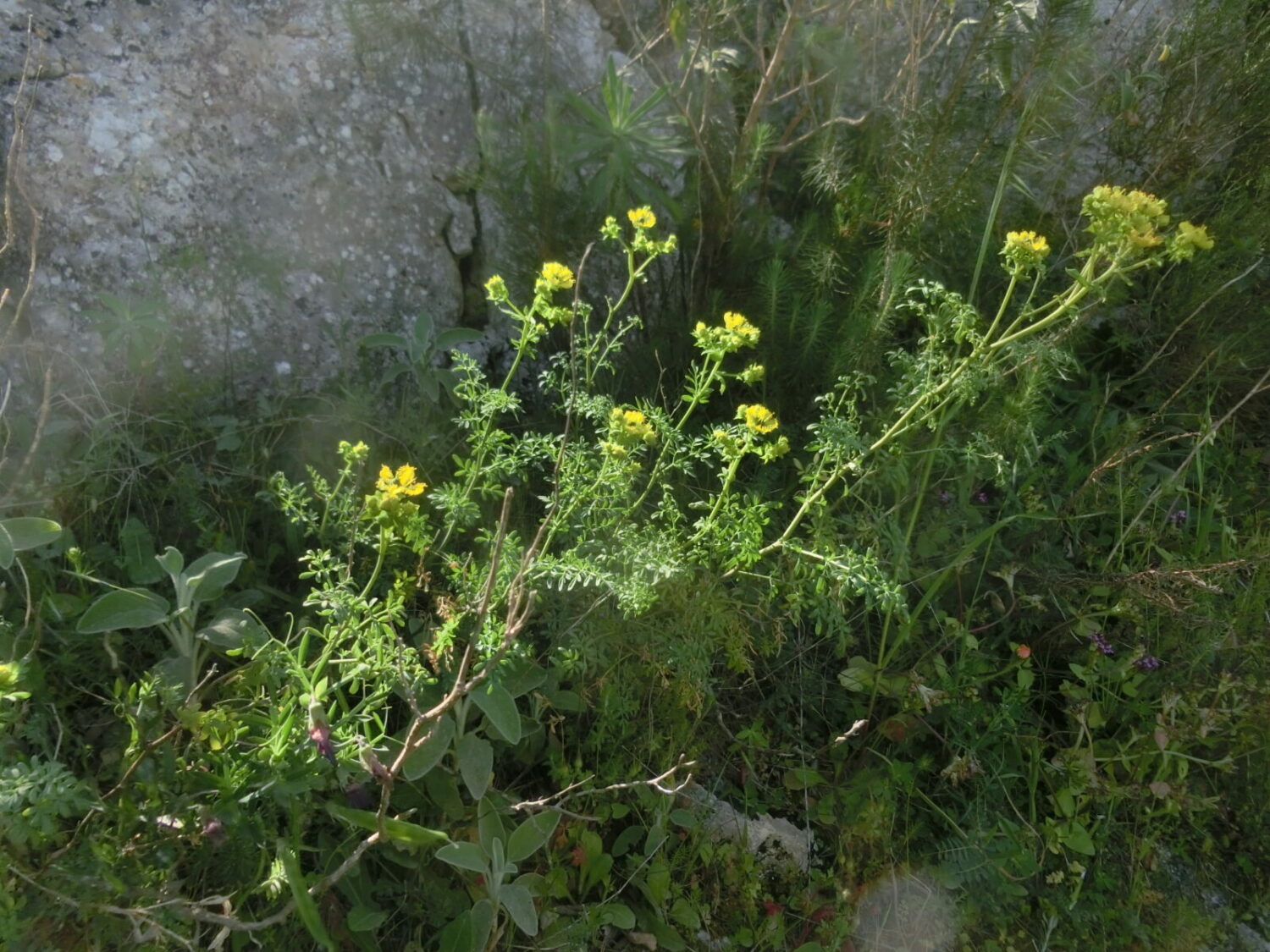
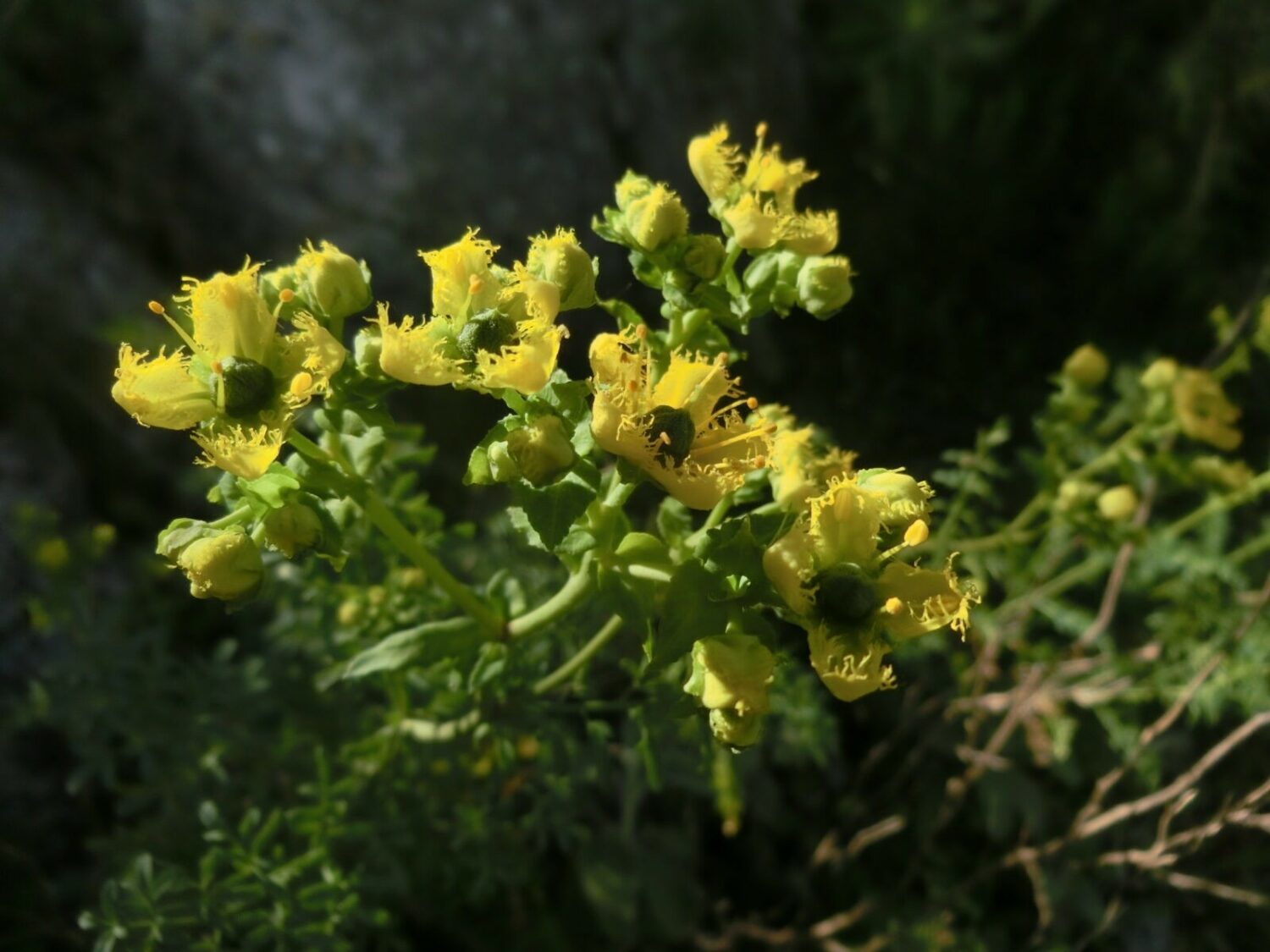
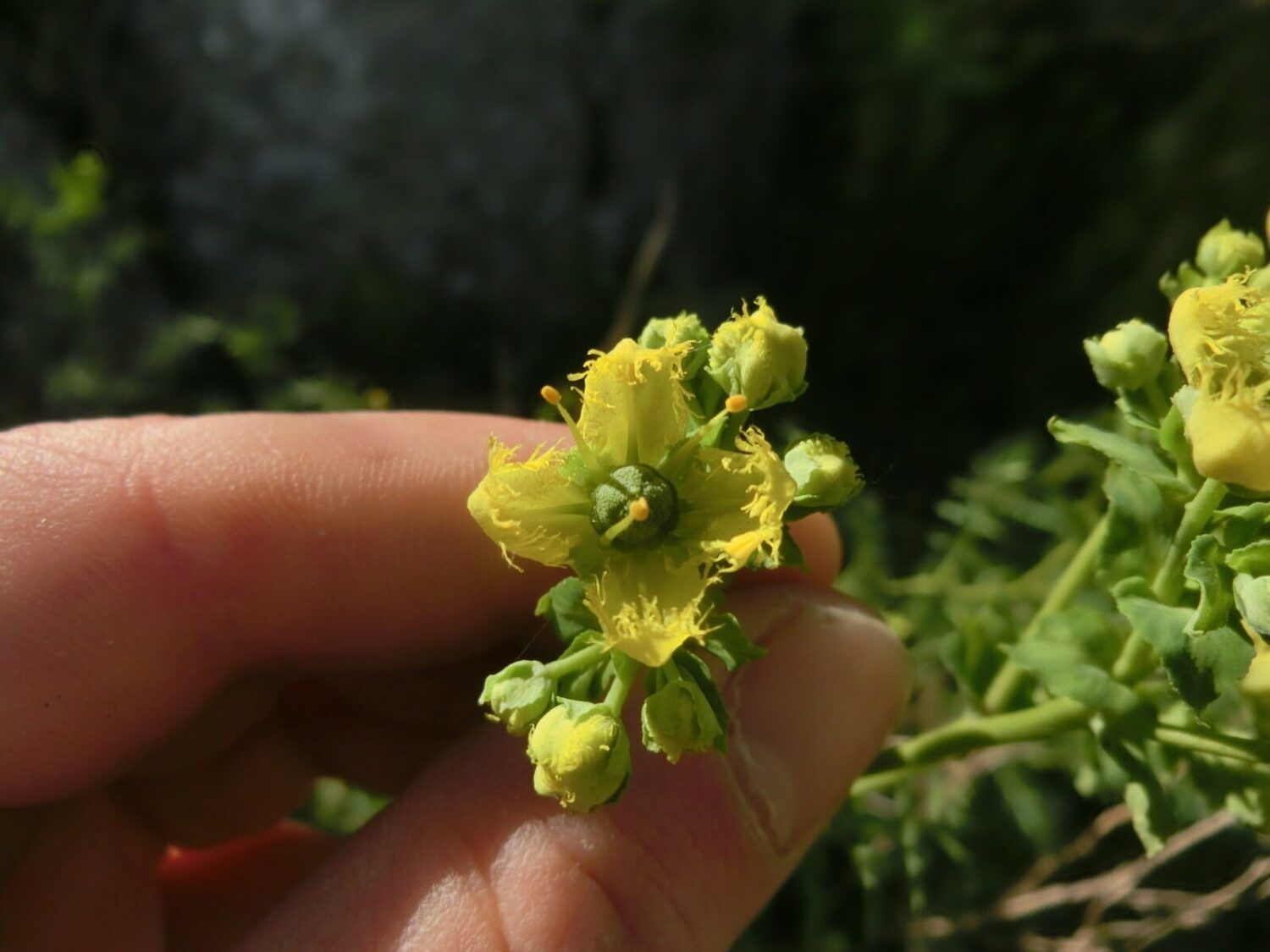
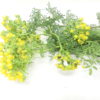
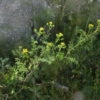
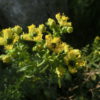
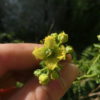
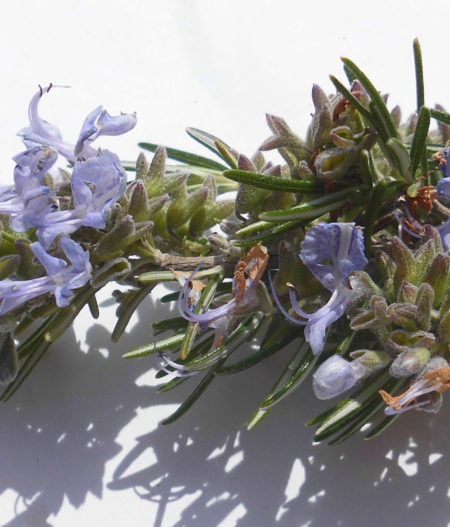
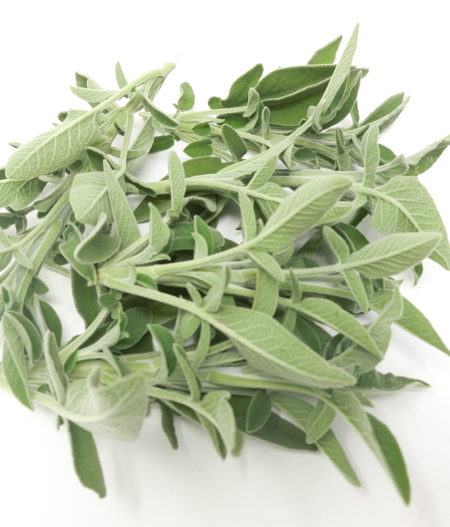
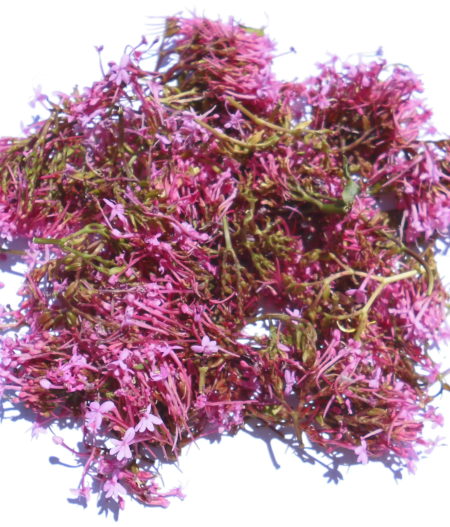
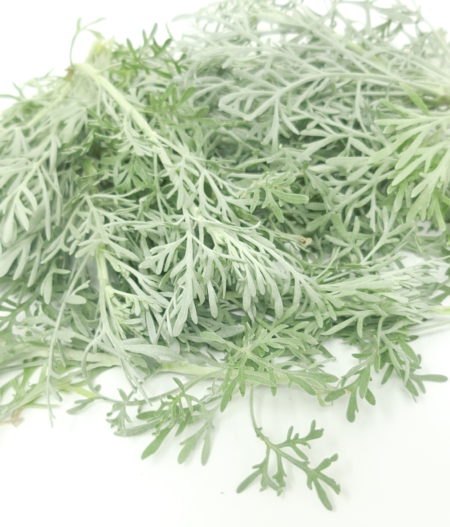
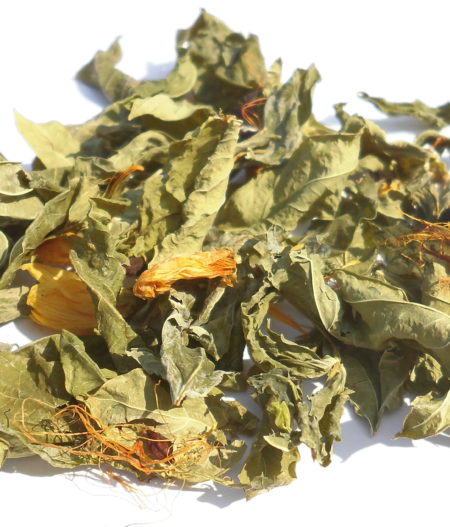
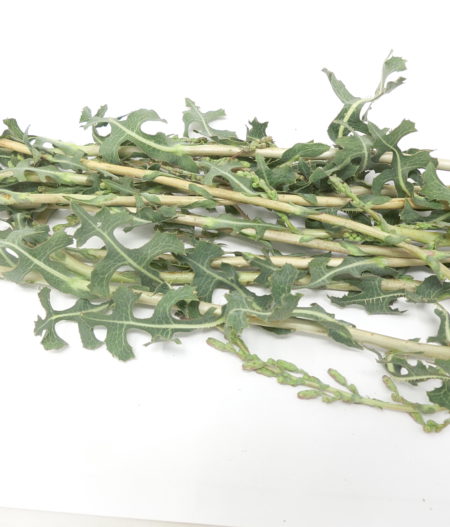
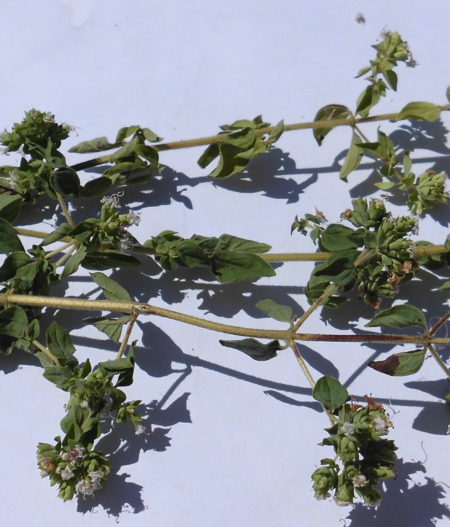
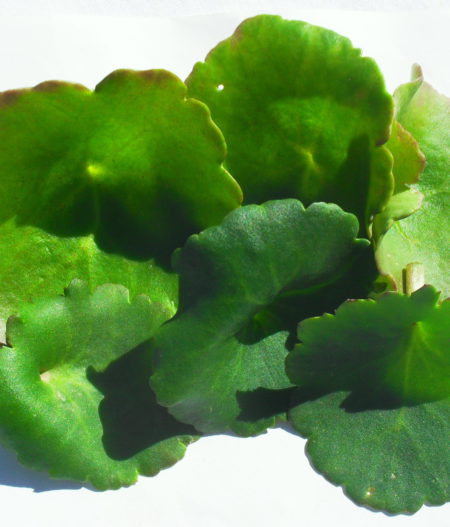
Recensioni
Ancora non ci sono recensioni.